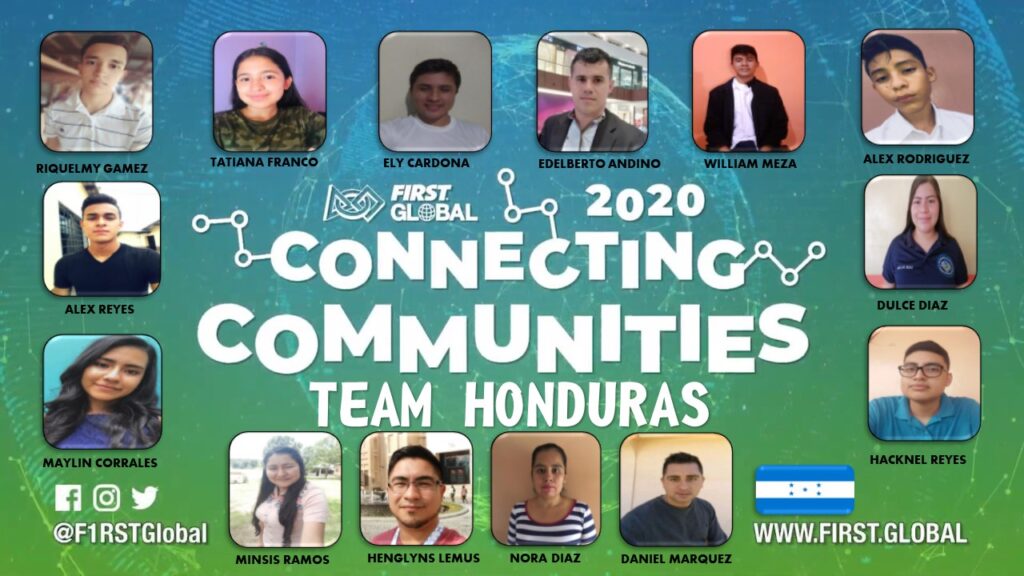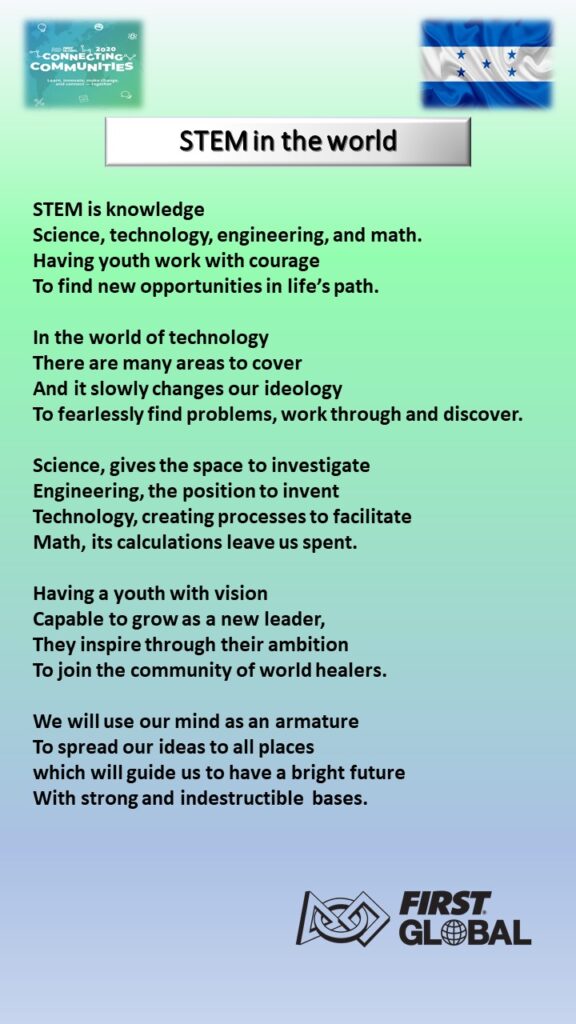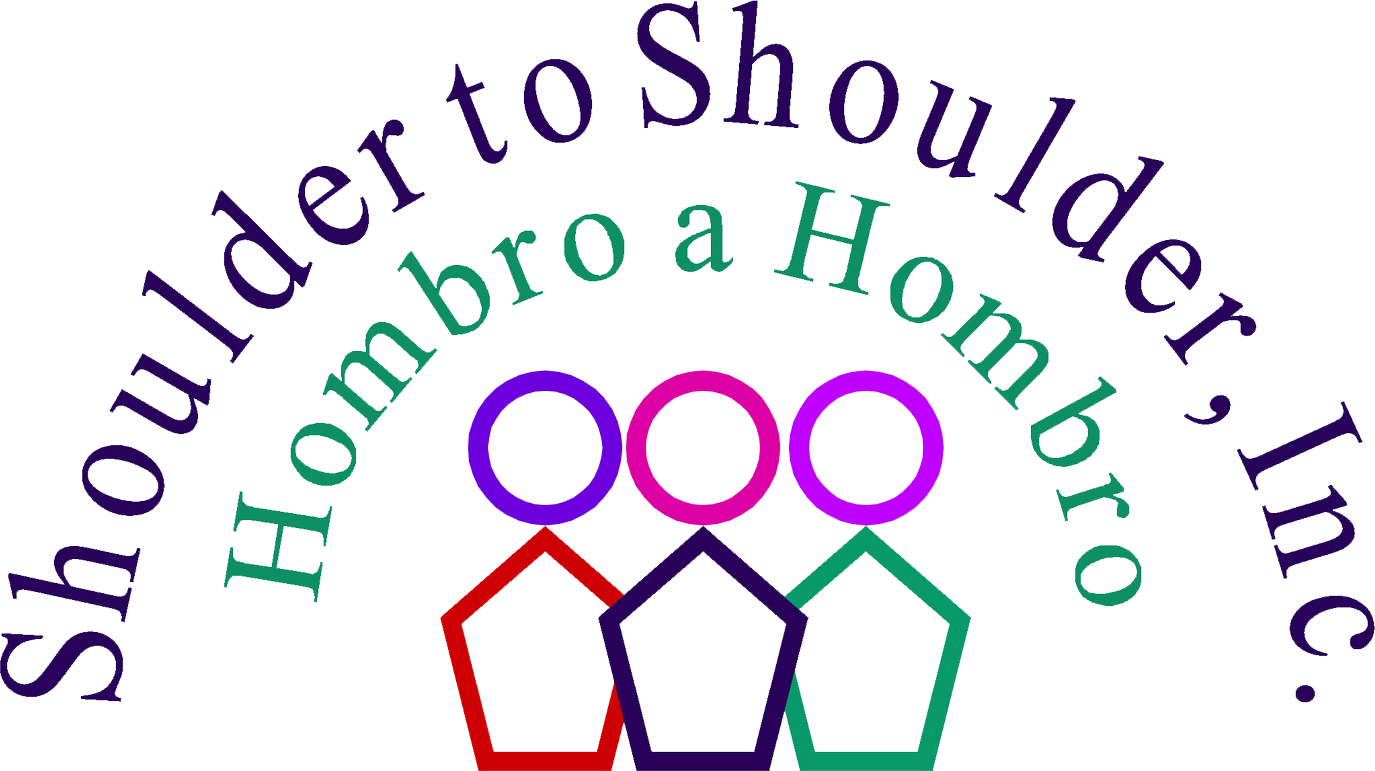A shield is considered one of the most historically known defense weapons. If a person wears a shield on their left arm, they can freely use the right arm to launch a counterattack. It adapts to various technological advances, reinforcing its materials to resist the blows of different weapons. But how can we ensure that this shield has all the needed pieces tightly assembled? The most effective way is to build it ourselves little by little, using our own efforts!
Education in our society is like a shield with a unique and personalized design. Shoulder to Shoulder is taking this challenge with a lot of positivity and enthusiasm; through giving youth in the frontier an opportunity to build their shields using four fundamental pieces: science, technology, engineering, and mathematics (STEM). During three consecutive years, young students from southern Intibucá have participated in the world robotics competition organized by First Global, and this year was not the exception. Despite all the difficulties we had against us, we decided to participate and represent our homeland. We worked through the theme,“Connecting Communities”

Honduras Robotic’s Team 2020 
Our Zoom calls
Defying difficulties:
At first, we were unable to complete the challenges due to a lack of internet connection. All the students come from low-income families, and it was difficult for parents to buy internet packages every week. On many occasions, we had heavy rains and no electricity and therefore no internet. It made it impossible for us to hold our zoom meetings.
On the other hand, students felt unmotivated to continue. Many times they connected onto the meetings but had difficulties giving their opinion. After conducting a motivational zoom call, each of the students was in charge of leading a challenge. This action awakened the leadership within the team members. Who would say that a little push was needed to improve this situation?! Once engineer Dean Kamen said, “Most of the time you will fail, but you will also occasionally succeed. Those occasional successes make all the hard work and sacrifice worthwhile,” and we could learn this is true.
“Most of the time you will fail, but you will also occasionally succeed. Those occasional successes make all the hard work and sacrifice worthwhile”
-Deam kamen
-Deam kamen
As the weeks went by, the activities became more interesting, and the students became more involved. Their enthusiasm was noticeable. When we reached the greatest crisis of the pandemic in Intibucá, our motivational spirits fell again. Students were prohibited from leaving their homes. It was a wave of fear and uncertainty against our desire to continue. I remember one day going out to the patio of my house and wondering if I should continue the project or not. I felt alone and without an opportunity to solve the problem immediately. I met again with the team, and together with the other high school mentors, we let them know the importance of continuing to learn through the challenges. And the privilege of representing our beloved Honduras so we continued, giving our best!
The FIRST Global Challenges:
We had two types of challenges: social challenges, and technical challenges. Social media challenges were fun prompts that encouraged us to share information, our culture, our experiences, our thoughts, and they did not require any technical skills. They consisted of creating a video, describing an image, or writing a story. In this category, we discovered many talents within our team: writing, acting, we planted trees, we contacted a government representative to socialize our robotics project, we created a poem dedicated to STEM, we appeared on the national news, and much more. These challenges had to be completed in 2-3 days and submitted using a specific format. Here are some of the pictures.


On the other hand, technical challenges required more effort and time than the general social media challenges and thus were worth more points. Some of the challenges were to fly a paper airplane as far as we could using a ramp, designing a protective helmet for firemen, and creating a pet food dispenser. To complete these challenges, we had to use CAD software, and only one student (Alexis) had a little bit of experience using the program. Some of these challenges took more than 35 hours of work to complete; we had to analyze the process very well before starting to execute it. After completing these challenges, we felt like all our neurons were dead, but the reality is that polishing the pieces for a good shield takes a lot of effort and sacrifice.
It was a journey of tremendous learning, not only intellectual but also moral. Each advance we made in the challenges was one more piece of security for our shield. At the end of this hard work we had obtained: 27th place worldwide, # 4 in the American continent, and # 2 in Central America. Also, we won the best mentor award gave to teacher Henglyns Henderson Lemus and an additional award for having completed more than 80% of the challenges during the season. The competition is over. There is no doubt that our education shield has been polished, adding more STEM knowledge.
To all our donors, thank you very much for investing in the education of our young people from Intibucá!
